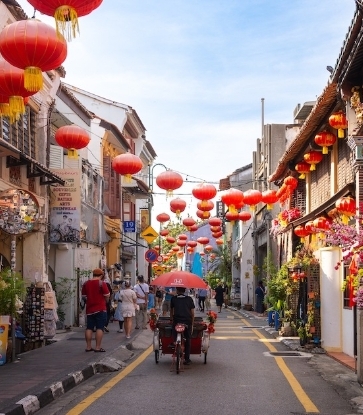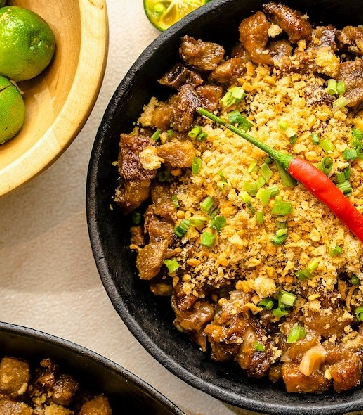
Perched on the scenic top floor of Arario Museum in Seoul’s historic quarter, Dining in Space is a modern classic French restaurant which received a Michelin star in the 2017 Seoul Guide. Surrounded by floor-to-ceiling windows, the 26-person capacity space is modern and minimal, boasting a drop-dead gorgeous view of Changdeokgung Palace and its grounds, a UNESCO World Heritage.
Chef de cuisine Noh Jin Seong honed his skills in such esteemed Michelin-starred establishments as Le Relais Louis XIII, Pavillion Ledoyen and L’Arpege in Paris before helming the kitchen at Dining in Space. The following interview takes a glimpse at the mind of a young chef with a reputation for pursuing nothing less than perfection on a plate.
You were the first to be called out when Michael Ellis announced the recipients of the Michelin stars last November. What went through your mind at the time?
It felt surreal. It was definitely strange being on the stage in front of so many people. It was also fun and uncomfortable all at the same time. I kept thinking, ‘Thank goodness the restaurant received a Michelin star–the global standard in dining–in the first edition of the Seoul guide.’
How did you get into French cuisine?
I actually didn’t know that what I’d wanted to cook was French food. I came across an article about Seo Seung-ho, the original owner chef of L’Amitié in Seoul, many years ago. I don’t remember the details but he talked about the importance of taking good care of a small number of customers, making sure they walked out the door happy. That kind of professionalism struck a chord with me. I called the restaurant the next day and got a job.
What did you like about French cuisine?
It’s edgy, precise…kind of like me. (Laughs) French food and I mesh well together.
You are known to be a perfectionist.
Nobody can be perfect. But I try to do my very best each time.

You made that phone call and got that job at L’amitié in 2003. When did you go to France?
I was in France from 2008 to 2010. I started out as an apprentice at a one-star restaurant in Tours which served old school classic French cuisine. It is where I started to open my eyes to the world of traditional French dining.
I moved onto Le Relais Louis XIII in Paris, a two-star restaurant. The food was still quite classic, but more elevated than the previous restaurant I worked at.
Pavillion Ledoyen was a change of scenery for me in terms of style of food. Yannick Alléno’s modern take on classic dishes made a big impression on me.
Lastly, I was at the three-star L’Arpege for only a couple of months but this is where I learned the most. The simplicity of the combinations of ingredients and flavors was completely original. Everything I’d known about French cuisine up until that point was turned upside down. I truly believe that Chef Alain Passard created a new genre of his own.
What kind of style are you pursuing at the moment?
I’m not sure. I am still finding my way. I am trying my best to apply my knowledge and understanding of classic French cuisine to create something original using the best seasonal ingredients I can find in Korea with new techniques and thoughts. I roast vegetables instead of blanching them to maximize their natural flavor. I cook ingredients, especially fish and seafood, in low temperatures to maximize their tenderness.
I do whatever I feel like doing. I do (discreetly) check if people actually appreciate what I do. The thing is so many people don’t really know what they like. That’s why it is important for me as a chef to find and to express my own style. I find that when I serve something that I am happy with, my customers like it too. However, in order for me to be happy with what I make, I need to experience as much as possible and to have confidence in myself.

What ingredients do you like to work with?
We get our main ingredients like fresh produce and seafood directly from the producers. I love vegetables like fennel, carrot, leek and zucchini. The flavor of a vegetable is different depending on where and when it was cultivated. For instance, carrots from Jejudo Island and carrots from Muan in Jeollanamdo Province are not the same carrot. If I taste a produce and I like it, I use it at the restaurant. Cauliflower is great this time of the year.
The quality of ingredients is everything. But not many people get our obsession with it. I guess for farmers, we are picky customers. When we place an order for white button mushrooms, we ask the producer to package it the night before and send it over the next morning. If they are packaged way in advance, the quality will suffer. Again, some people understand this and some don’t. It’s something we have to live with.
How often do you change the menu?
We have a standard prix fixe menu and several variations of it. Repeat customers get something different each time; we can’t change the entire menu, maybe two starters and a main. We also have a menu for people with food allergies.
What you’re saying is that the restaurant has a database for every customer that comes through the door.
That’s right. We document the date, the name of the customer and what they ate. We plan the menu based on that information. We don’t want to serve repeat customers the same food they ate the previous time. So, we take it into our own hands and change things around a bit. But many people still think we serve the same food over and over.

What is your main focus when your cook?
There are many, but if I were to pick one, it would have to be balance. It would be ideal if each and every ingredient on a plate complemented one another to create that perfect harmony, but that is not always possible. At the very least, I don’t want to create any discord between the elements I put on a plate. Every single element is there for a reason. Balance is important but it can’t be trite either.
How do you create your menu?
I usually read books or draw. I sketch the ideas I have in my head and repeat this process several times. Then, I pick one out of ten ideas and test it out in the kitchen. We taste it and make the final decision.
What kind of food do you like to eat on your days off?
I like tofu dishes. It’s simple food but good food. I like soondubu, both the spicy and the clear versions.
Could you tell us one thing that you’ve eaten in the past that was shockingly good?
It was ris de veau (veal sweetbreads) I ate at Le Relais Louis XIII in Paris where I used to work. When I took my first bite, I knew that was what really good ris de veau was supposed to taste like. I’d been used to frozen veal sweetbreads because that is all we can find in Korea, so the flavor, the texture and the way the sweetbreads were executed was truly revelatory. It’s like comparing sashimi made from fish that had been frozen and thawed with sashimi made from fresh fish that has been perfectly aged.
Which chef do you most look up to?
In France, Michel Bras. In Japan, Shuzo Kishida.
If you had a chance to meet the French chef, what would you ask him?
I would ask him what he finds the most difficult about helming a kitchen; what his priorities are when cooking; where he gets his inspiration from; how he manages to find the perfect balance in a dish; and how he manages to encourage teamwork in the kitchen.

What are you inspired by?
I get inspiration from reading magazines and browsing through the web, sometimes from out of nowhere. I am mostly inspired by the flavor of ingredients. If the raw material is good, cooking becomes much easier.
Is it important for cooks to work in a fine dining restaurant at some point in their career?
I would say yes. I speak from experience when I say that one star, two stars or three stars reflect a chef’s depth of knowledge and expertise. There is a reason why some places get one star while others get three. For me, a chef who runs a three-star establishment is an artist. Those are the people who define the foods of their time with their innovative ideas and thoughts. I can’t stress enough just how important it is to learn from them. You will learn so much by understanding their thoughts and even by imitating their food. This kind of process is necessary for cooks to eventually discover their own style.
Do you have any advice you’d like to give to young chefs out there?
If you think French is the path for you, then go to France to study. If you start with modern or fusion dining, it will be difficult to last in the industry. Learn the basics of classic French cuisine then apply the trends.
Published 2017.01.06




















